#f-94c starfire
Explore tagged Tumblr posts
Photo
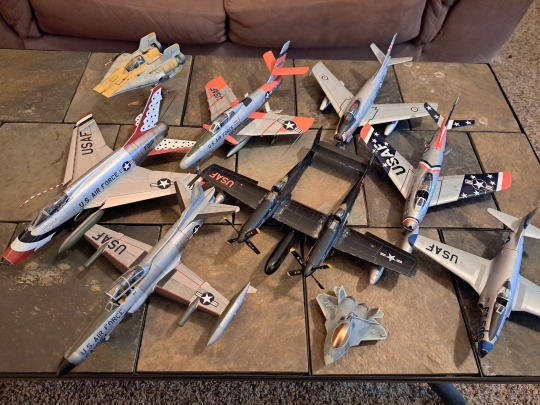
Since I know I’m not going to start/finish anything else this year, here are my model kit builds from 2022. I was focused mostly on US Air Force kits in celebration of the 75th anniversary. The RCAF Sabre was a kit started last year, but finished in early 2022. The raptor is a Christmas gift. The F-82 Twin Mustang is a brand new kit for 2021/2022 that I had shipped from Ukraine before the war started. The RF-84F Thunderflash is a vintage kit from the 60′s. I worked on a few niche kits this year that took up a lot of time, but I’m happy with the results.
#model airplane#scale model#Trumpeter#f-100 super saber#kitty hawk#f-94c starfire#heller#rf-84f thunderflash#Modelsvit#f-82 twin mustang#italeri#f-86 saber#hobby boss#f-80 shooting star#hasegawa#f-22 egg plane#mpc#a-wing starfighter#2022
27 notes
·
View notes
Text
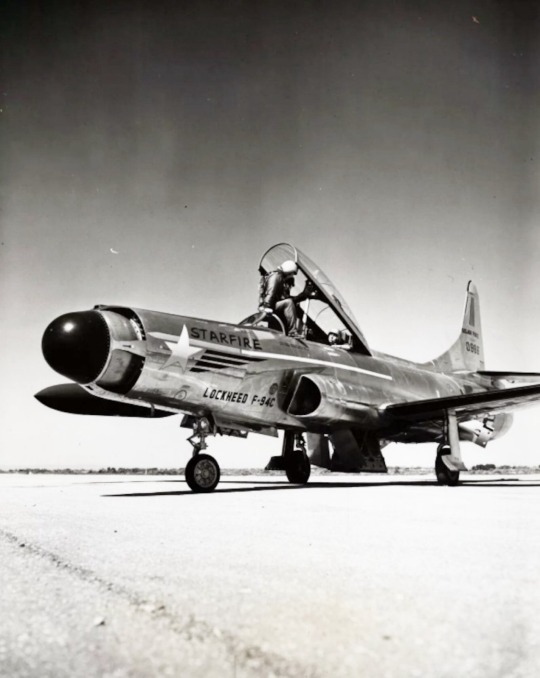
Rocket-nose F-94C Starfire. Firing the Mighty Mouse FFARs blinded the crew with smoke and fire and could cause engine flameout. But does it look cool?
@Tempest_books via X
14 notes
·
View notes
Text
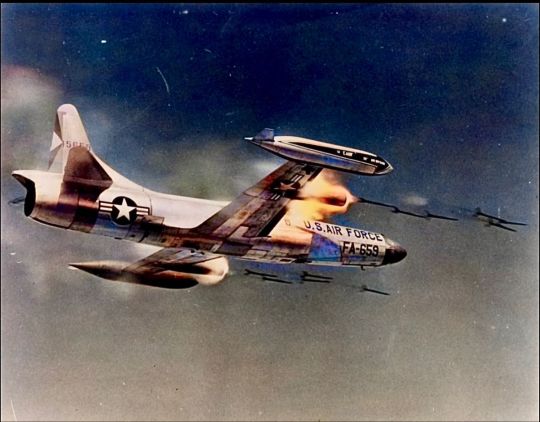
Lockheed F-94C Starfire
A USAF F-94C Starfire firing it load of rockets.
13 notes
·
View notes
Text
JEAN HIXTON // AVIATOR
“She was an American aviator, a Women Airforce Service Pilot and part of the Mercury 13. She was also the second woman to exceed Mach One. In 1957, she became the second woman to exceed the speed of sound, in a Lockheed F-94C Starfire flying at over 840 miles per hour (1,350 km/h). She went to work at the Flight Simulator Techniques branch of the USAF Reserve in Ohio and she retired from the Air Force Reserves as a Colonel, and that same year chaired a WASP reunion.”
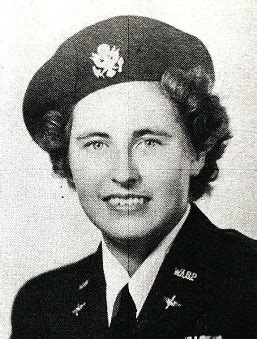
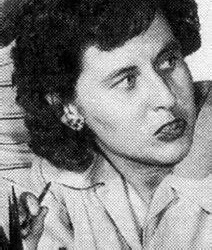
0 notes
Text
I've been posting these on opposite-lock.com and drivetribe.com, and I wanted to share this one here too.
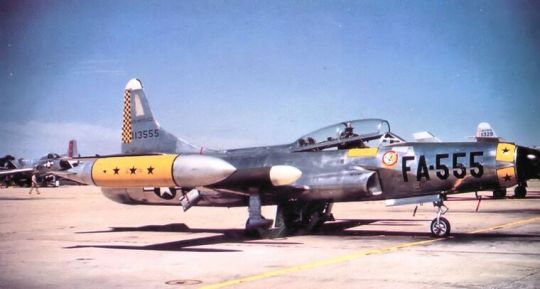
An F-94C belonging to the 27th Fighter-Interceptor Squadron in New York being readied for a flight in 1955. | Photo: USAF
FLIGHTLINE: 112 - LOCKHEED F-94 STARFIRE
Developed from the T-33 Shooting Star trainer, the F-94 was a first-generation jet fighter/interceptor which fought in Korea but was quickly retired.
In 1948 the newly independent USAF released a specification for a radar-equipped jet fighter/interceptor to replace the WWII-era F-61 Black Widow and the early post-war F-82 Twin Mustang. Lockheed responded with a design based on their T-33 jet trainer, which was in turn based on the F-80 Shooting Star fighter. Two existing TF-80C (the original designation for the T-33) were modified with a new nose containing the guns, radar and fire control systems. The original Allison J33 engine was replaced by and uprated J-33-A-33, which was fitted with an afterburner, the first American production aircraft to be so equipped. These two YF-94s retained approximately 75% commonality with the earlier T-33 and F-80. The first flight of a YF-94 was on 16 April 1949, several months after a production contract had been signed.

The second YF-94A, serial number 48-373. | Photo: USAF
PRODUCTION, TEETHING PROBLEMS, AND UPDATES.
The F-94A entered service in May 1950, with 109 produced. This first model was armed with four .50 cal Browning machine guns in the lower nose, and like the F-80 and T-33 was normally fitted with a pair of 165 gallon drop tanks on the wingtips to increase range. Aircrews were not fond of these planes, and there were numerous issues with the early design. The afterburner-equipped J33s were not reliable, with issues plaguing the igniter and flame-holder. These problems caused a number of ground aborts and other in-flight emergencies. The F-94A was also unstable in flight and had poor high-altitude maneuverability. Finally, crews found the cockpit cramped and difficult to enter in an alert or scramble situation. There were also clearance issues with the ejection seats, resulting in several fatalities.
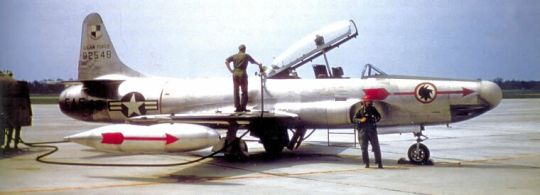
F-94A s/n 49-2548 of the 2nd FIS at McGuire AFB in 1952. | Photo: USAF
Lockheed began deliveries of the improved F-94B in January 1951. This aircraft was outwardly similar to the F-94A, but the cockpit was reworked to improve crew comfort and performance, as well as to correct the fatal flaws with the ejection seat clearance. The J33 engine was much improved as well, becoming a much more reliable power plant. A new instrument landing system (ILS) was added, and a gun pod was developed that would add two additional 50 cals under each wing, bringing the total to eight guns. As the new F-94Bs were introduced, older A models were returned to Lockheed and updated to the B standards. As newer aircraft replaced the F-94 in service, the planes were passed down to Air National Guard units, where they served until the late 1950s.

An F-94B from the 61st FIS at Selfridge AFB in Michigan, some time in 1952.
SERVICE AT HOME AND ABROAD.
As befitting the F-94s intended role as an interceptor, the aircraft were mostly flown under Air Defence Command auspices, equipping some 26 squadrons. The F-94s replaced older F-82F Twin Mustangs, which had been hurriedly pressed into service after a 1949 display by the USSR of the Tu-4 (NATO code name "Bull") bomber, a reverse-engineered copy of the Boeing B-29. The F-94 turned out to be somewhat inferior to the Twin Mustang however, having shorter legs than the F-82, as well as relying more on ground-based radar to guide them to targets. Despite these shortcomings, procurement of the F-94 continued, with air groups around the country replacing F-47 Thunderbolts, F-51 Mustangs, F-80 Shooting Star and F-86A Sabre day fighters with F-94As and later updated B models. Three Air National Guard (ANG) units, the 121st FIS (DC ANG), 142nd FIS (Maine ANG), and 148th FIS (Pennsylvania ANG) received F-94Bs and were placed on active duty to guard the Washington, DC airspace during the Korean War.

Two F-94s fly in formation with an F-82 Twin Mustang in 1950. | Photo: USAF
F-94s also saw deployment to Japan and South Korea as the Korean War heated up, with the first F-94Bs arriving in Japan during March of 1951 to train pilots on the new jet. Flights of Soviet MiG-15 fighters over Seoul in December of that year saw some of these aircraft being detached to Suwon Air Base to defend the South Korean capital. By March of 1952, F-94s from the 319th FIS were flying escort missions for B-29 bombers. Early encounters with Soviet MiGs indicated that they had been equipped with radar warning receivers, as the communist fighters would begin evasive maneuvers once the US aircraft locked-on. USAF F-94s were credited with several kills during the conflict, including the first jet-versus-jet night intercept. After the 1953 Armistice, F-94s remained in South Korea and Japan to fly air defense missions, finally being replaced in 1954 by radar-equipped F-86D Sabre Dogs.

An F-94B belonging to the 68th FIS at Suwon Air Base. This aircraft suffered an engine fire in December 1952 and crashed, killing both crew. | Photo: USAF
YF-97A STARFIRE.
Even before the F-94 started seeing service, Lockheed began work on a massively redesigned and improved interceptor. This new plane, tentatively designated the YF-97 Starfire, retained the fuselage of the F-94, but had a new, thinner wing, along with swept horizontal stabilizers. The troublesome J33 was replaced by the Pratt & Whitney J48, a license-built copy of the Rolls-Royce Tay turbojet which powered the Dassault Mystère IV fighter/bomber. The fire-control and radar systems were also upgraded, resulting in a larger nose. Also fitted in the nose were four trays of six 2.75" FFAR, which fired out through four fold-in doors. The Browning machine guns were deleted. In service, firing these rockets tended to blind the crew, and there were issues with the engines ingesting rocket exhaust and flaming out. In response, pods were developed that fitted to the wing along the leading edge, each of which carried 12 FFAR. The nose trays were then left empty most times. This new aircraft was eventually designated the F-94C, gaining the nickname Starfire, which eventually became applied to earlier models of the F-94 as well. Lockheed began delivery of the F-94C in 1954, and they were quickly incorporated into the Semi-Automatic Ground Environment (SAGE) air defense system. As Starfire deliveries ramped up, the earlier F-94Bs were passed down to ANG units, then were retired.

One of the YF-94C prototypes with the nose rocket doors open. | Photo: USAF
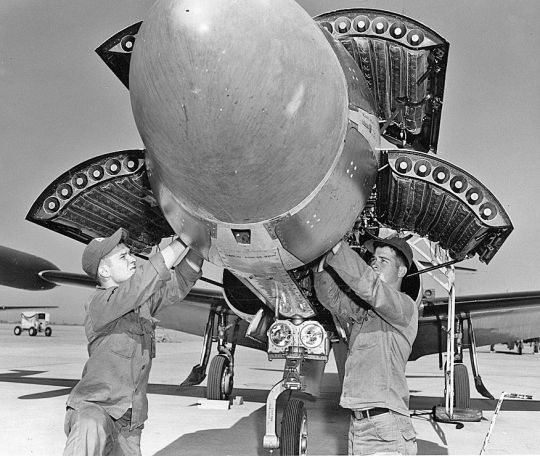
An F-94C, with its FFAR loading trays open, being services by two USAF Airmen. | Photo: USAF
STARFIRE ECLIPSED.
Despite being an advanced aircraft at the time of development, the rapid pace of aviation in the 1950s soon saw the F-94s made redundant by more capable interceptors like the F-86D Sabre Dog and the F-89J Scorpion. The Starfire was removed from front-line USAF service in 1957, after just 3 years, and the type was phased out of ANG service in 1959. A number of aircraft have been preserved around the US, among them a YF-94A prototype at Edwards AFB which is awaiting restoration, two F-94As, and 11 YF-94C and F-94C examples.
PRUNED BRANCHES OF THE FAMILY TREE.
In addition the fighter/interceptor variants, Lockheed also pursued other missions for the F-94. F-94C s/n 50-963 was retained by Lockheed for a possible photo recon variant. The EF-94C ("E" for Exempt rather than "R" for reconnaissance because it was a self-financed research program) saw the radar and missiles replaced by cameras and sensors. The USAF was not interested, and the plane was later scrapped.
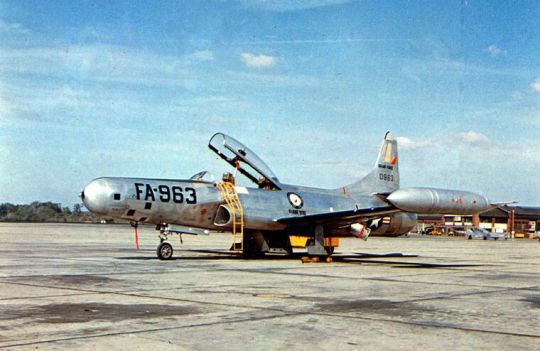
The EF-94C, possibly at Lockheed's plant. | Photo: Lockheed Corp.
In January 1951, Lockheed received a contract for 113 single-seat fighter/bombers based on the F-94C. The existing fuselage, tail and engine of the Starfire would be mated to a new, larger nose containing 8 .50cal machine guns and a new wing that was 50% larger. The fighter/bomber, designated the F-94D, would be capable of carrying 4,000lbs of bombs and rockets, and would have had a refueling probe for increased range. Two F-94Bs were modified with the new nose and wing to trial various configurations for the YF-94D. The USAF canceled the F-94D project on 15 October 1951, preferring that Lockheed focus on the F-94C interceptor instead. One of the F-94Bs from the program, s/n 51-5500, was later bailed to General Electric for use as a testbed for the T-171 (later M61A1) Vulcan cannon.

F-94B s/n 51-5500, late of Mass. ANG, modified with an experimental nose and wing for the stillborn F-94D program.
#aircraft#aviation#avgeek#cold war#airplanes#cold war history#airplane#usaf#coldwar#aviation history#korean war#1950s#1950s aesthetic#50s#the fifties#Lockheed#f94#f94 starfire#interceptor#1st gen
31 notes
·
View notes
Video
51-5623 Lockheed F-94C Starfire USAF Pima Air & Space Museum 25.06.99 by Phil Rawlings
4 notes
·
View notes
Photo

Lockheed F-94C Starfire y (quizás) un Mercury de 1954. Si saben qué auto es, se agradece el dato https://www.instagram.com/p/CIAixkLgwDb/?igshid=NGJjMDIxMWI=
1 note
·
View note
Photo

USAF Lockheed F-94C Starfire of the 354th FIS, Oxnard AFB, California 1955.
17 notes
·
View notes
Link
0 notes
Photo

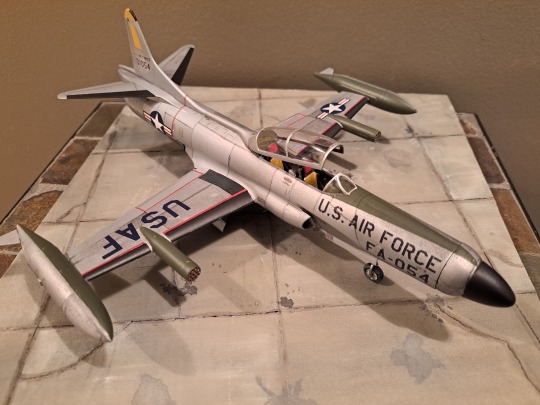
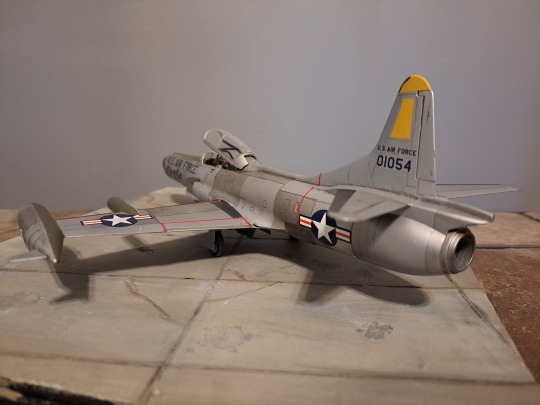


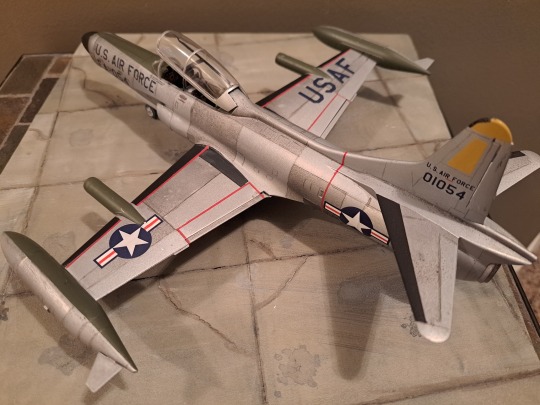
Last build for 2022, the Lockheed F-94C Starfire, Kitty Hawk 1/48. The kit was perplexing to me. I’ve never seen plastic this thin before, but it was great for scale, so kudos. The kit went together really well for a short run kit, really didn’t have any fit issues until I got to the wing roots, which left a huge gap on both sides. So that was a lot of putty and sanding. Onto paint, no problems, but the decals were a bit of a nightmare. They were hollow, if I can explain it. So like, the zeroes for example, were hollow, there was no decal film inside of the letters. So these decals just pulled apart when positioning them. Micro-sol just made them so thin that they split over panel lines. I had to trash the Air Force logo on the nose, and go into the spares box, which thankfully I had. There were also checkers on the tip tanks and rudder, but those crumbled as well. Since F-94 is such a niche build, there really isn’t much for aftermarket decals. In the end, I got them as good as I could and called it done. Despite the struggles, I’m pretty happy with the results, I’ll take them at least.
17 notes
·
View notes
Text
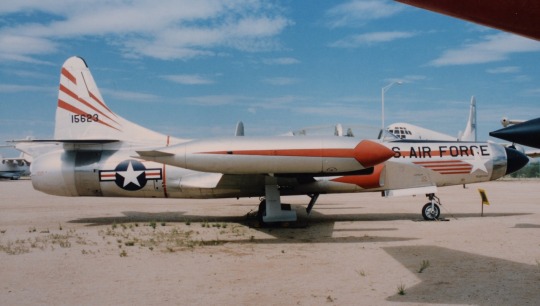
F-94C Pima Museum AZ
F-94C Starfire 51-5623、
October 1995。
@headdancer7 via X

11 notes
·
View notes
Photo

F-94C STARFIRE 3
0 notes
Photo

16 April 1949: At Van Nuys Airport, California, test pilot Tony LeVier and flight test engineer Glenn Fulkerson made the first flight of the Lockheed YF-94 prototype, serial number 48-356. The aircraft was the first jet-powered all-weather interceptor in service with the United States Air Force and was the first production aircraft powered by an afterburning engine. Two prototypes were built at Lockheed Plant B-9, located on the east side of Van Nuys Airport. Two TF-80C-1-LO (later redesignated T-33A) Shooting Star two-place trainers, 48-356 and 48-373, were modified with the installation of air intercept radar, an electronic fire control system, radar gun sight, four Browning AN-M3 .50-caliber (12.7 × 99 NATO) aircraft machine guns and a more powerful Allison J33-A-33 turbojet engine with water-alcohol injection and afterburner. The rear cockpit was equipped as a radar intercept officer’s station. It was initially thought that the project would be a very simple, straightforward modification. However, the increased weight of guns and electronics required the installation of a more powerful engine than used in the T-33A. The new engine required that the aft fuselage be lengthened and deepened. Still, early models used approximately 80% of the parts for the F-80C fighter and T-33A trainer. The Air Force ordered the aircraft as the F-94A. Improvements resulted in an F-94B version, but the definitive model was the all-rocket-armed F-94C Starfire. [...] Originally a P-80C Shooting Star single-place fighter, 48-356 had been modified at Lockheed Plant B-9 in Van Nuys to become the prototype TF-80C two-place jet trainer (the designation was soon changed to T-33A), which first flew 22 March 1948. It was then modified as the prototype YF-94. 48-356 was later modified as the prototype F-94B. It is in the collection of the Air Force Flight Test Museum, Edwards Air Force Base, and is in storage awaiting restoration. Source: www.thisdayinaviation.com #flight #aviation #sky #freedom #adventure #pilot #dream #lookup #airforce #dontforgetohastag #airplane #aviationlovers #airport #flying #jet #propeller #aviationhistory #crewlife #plane #pilotlife #f94 #avporn #aviator
#sky#propeller#aviationlovers#flight#flying#crewlife#airforce#avporn#airport#lookup#dream#adventure#airplane#aviationhistory#jet#pilot#aviation#pilotlife#freedom#f94#aviator#dontforgetohastag#plane
0 notes
Photo

Two crew of the 3200th Fighter Test Squadron, Air Proving Ground Command, Eglin AFB, Florida, are killed in a Lockheed F-94C-1-LO Starfire, 50-969, when it crashes at Fairfax Field, Kansas City, Kansas. Fighter had departed the airfield on a routine training mission for a flight to Scott AFB, Illinois, when the pilot attempted to return shortly after the 1330 hrs. CST take-off. Fighter struck a dike short of the runway, hitting ~10 feet (3.0 m) below the top, and caromed onto the runway. Radar operator was killed on impact and the pilot died later of injuries.
0 notes
Video
F-94C Starfire s/n 50-966 by G. Verver Via Flickr: USAF F-94C Starfire s/n 50-966 inflight, 1954.
9 notes
·
View notes
Text


That sneaky Lockheed F-94C Starfire carried 24 rockets in the nose in a ring around the radome, shielded by retractable doors, with an additional 24 in the wing pods, if installed. (Ty Greenlees USAF)
@kadonkey via X
19 notes
·
View notes